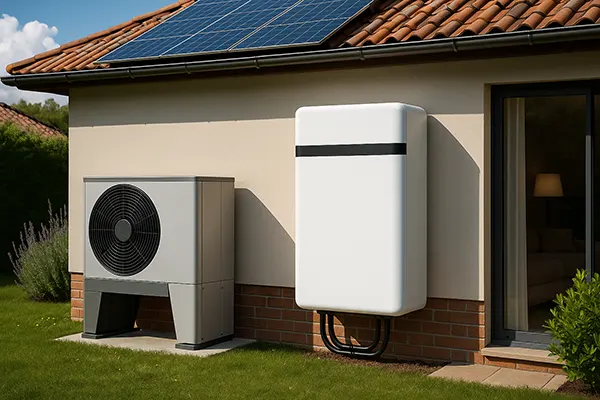
Energy Storage Bricks Technology Review
Energy storage is a critical component in the transition to renewable energy sources. One of the most innovative advancements in this field is energy storage bricks. This technology combines the structural benefits of traditional building materials with the ability to store and release electrical energy. The concept of energy storage bricks emerged in the early 21st century, with significant development occurring over the past decade. This article reviews the technology, its functionality, applications, potential future uses, performance, and evaluates whether it is a temporary hype or a promising technology.
What the Technology Is and When It Appeared
Energy storage bricks are a novel technology that integrates energy storage capabilities into conventional construction materials. This innovation primarily involves embedding energy storage materials, such as supercapacitors or batteries, within the bricks used for building structures. The idea first gained traction in the early 2000s, but it wasn’t until recent years that significant advancements were made. Researchers at various institutions began exploring the potential of this technology to create buildings that not only serve as shelters but also as energy storage units.
The breakthrough came with the development of conductive polymer coatings that could be applied to bricks. These coatings enable the storage and discharge of electrical energy, effectively turning the bricks into supercapacitors. The technology has since evolved, incorporating more efficient materials and designs, leading to the current state-of-the-art energy storage bricks we see today.
How It Works and What Tasks It Performs
Energy storage bricks work by incorporating conductive materials and coatings that allow them to store electrical energy. The most common method involves coating the bricks with a layer of PEDOT (poly(3,4-ethylenedioxythiophene)), a conductive polymer. This coating acts as an electrode, enabling the storage of electrical energy within the brick. When connected to an electrical circuit, these bricks can charge and discharge energy, similar to how a battery or supercapacitor operates.
The primary tasks performed by energy storage bricks include energy storage, load balancing, and providing backup power. By integrating these bricks into building structures, it is possible to create self-sustaining buildings that can store energy generated from renewable sources like solar or wind. These buildings can then use the stored energy during periods of low generation or high demand, contributing to a more stable and reliable energy supply.
Where It Applies
Energy storage bricks have a wide range of applications, particularly in the construction of smart buildings and sustainable infrastructure. One of the most promising applications is in residential and commercial buildings where they can be used to store excess energy generated from rooftop solar panels. This stored energy can then be used during the night or cloudy days, reducing reliance on the grid and lowering energy costs.
Another significant application is in emergency backup systems. Buildings constructed with energy storage bricks can maintain power during outages, ensuring that critical systems remain operational. This is particularly important in hospitals, data centers, and other facilities where uninterrupted power is essential.
Additionally, energy storage bricks can be used in remote or off-grid locations where access to a stable power supply is limited. By incorporating these bricks into the construction of buildings in such areas, it is possible to create self-sufficient structures that can generate and store their own energy, enhancing the quality of life for residents.
Where Else It Can Be Used
Beyond traditional building applications, energy storage bricks have the potential to be used in a variety of innovative ways. For instance, they could be integrated into public infrastructure such as bridges, roads, and tunnels. By embedding energy storage capabilities into these structures, it is possible to create smart infrastructure that can support a variety of applications, from street lighting to powering electric vehicle charging stations.
In the transportation sector, energy storage bricks could be used in the construction of train stations and airports. These buildings often have large surface areas that can be utilized for energy generation and storage, providing a sustainable power source for their operations.
Another potential use is in the development of temporary shelters or emergency housing. During natural disasters or humanitarian crises, rapid deployment of energy-efficient and self-sustaining shelters is crucial. Energy storage bricks can play a vital role in providing reliable power in such situations.
Furthermore, energy storage bricks can be incorporated into agricultural structures, such as greenhouses and barns. These buildings can benefit from stored energy to power ventilation, lighting, and irrigation systems, contributing to more sustainable farming practices.

How Well She Copes With Her Task
The performance of energy storage bricks in real-world applications has been promising. Studies and pilot projects have demonstrated that these bricks can effectively store and release energy, contributing to the overall energy efficiency of buildings. The use of conductive polymer coatings has been particularly successful, offering a balance between energy storage capacity and durability.
However, there are still challenges to overcome. The energy storage capacity of individual bricks is relatively low compared to conventional batteries. Therefore, a significant number of bricks are required to store a meaningful amount of energy. Despite this, the modular nature of bricks allows for scalability, enabling larger structures to benefit from the technology.
In terms of durability, energy storage bricks have shown resilience under various environmental conditions. The conductive coatings used are designed to withstand typical wear and tear, making them suitable for long-term use in building structures. Ongoing research aims to enhance the efficiency and lifespan of these materials, ensuring that energy storage bricks remain a viable solution for the future.
Temporary Hype or Promising Technology?
The question remains whether energy storage bricks are a temporary hype or a promising technology with long-term potential. Current trends and research suggest that this technology holds significant promise. The ability to integrate energy storage into building materials addresses a critical need for efficient and sustainable energy solutions.
Moreover, the increasing focus on renewable energy and the development of smart cities align well with the capabilities of energy storage bricks. As urban areas continue to grow, the demand for innovative energy solutions will only increase. Energy storage bricks offer a unique and practical way to meet these demands, providing both structural and energy benefits.
In conclusion, while energy storage bricks are still in the early stages of adoption, their potential impact on the construction and energy sectors is substantial. Continued investment in research and development will likely lead to further improvements in efficiency and cost-effectiveness, solidifying their role as a cornerstone of future energy solutions.
Popular articles
-
 Why Modern Technologies Are Becoming More ...
Why Modern Technologies Are Becoming More ...Modern technologies are developing at a pace that few users can fully …
Learn more -
 Next-Generation Home Batteries: Hybrid Ene...
Next-Generation Home Batteries: Hybrid Ene...Hybrid home batteries have become a practical foundation for residential energy autonomy …
Learn more -
 How Artificial Intelligence Transforms Hom...
How Artificial Intelligence Transforms Hom...By 2025, artificial intelligence has become a central component of modern home …
Learn more
